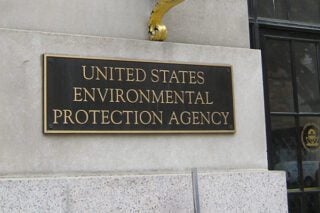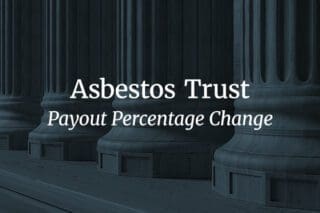Last June, anti-asbestos advocates rejoiced upon the passing of the Frank R. Lautenberg Act that seemed to pave a clearer path to a future ban on the toxin. The celebration continued a few months later when the Environmental Protection Agency (EPA) listed the first ten chemicals they would investigate and asbestos was included.
Six months after that exciting announcement, the EPA has given the public a glimpse into their investigations by releasing their scope documents of the risk evaluations for all ten chemicals. The documents include an initial look at the conditions of use and hazards these chemicals pose, and an analysis plan for how the EPA will further assess exposures and risks.
Though the first look is just the very beginning of the years-long investigations ahead, the document provided some insight into asbestos use today and provides hope that the next steps will lead to an eventual ban on the toxin.
Asbestos Use in the United States
Many people think of the dangers of asbestos in terms of its old uses. It was so widely used in construction that it remains in older homes and buildings, and even some older consumer products. These legacy uses and their disposal were not considered for the EPA’s evaluation because they believe the assessments should be focused on current or reasonably foreseen uses of the chemicals. The agency also noted they excluded instances of the asbestos-contaminated vermiculite from Libby, Montana, because the mine is no longer being used.
Chrysotile has been the most predominantly used type of asbestos in the United States, and remains to be today. Though asbestos hasn’t been mined in the United States since 2002, it’s still imported in large quantities each year. According to the document, 340 metric tons (749,572 pounds) of raw asbestos was imported, primarily from Brazil, in 2016 alone.
The report also notes that all of the asbestos imported is currently used in the chlor-alkali industry. Industry representatives informed the EPA that today three companies operate 15 of these plants that use the raw asbestos in production of semi-permeable diaphragms. The document notes the agency’s plans to further evaluate the processes at these plants. It’s estimated that a typical plant uses anywhere from 5 – 25 tons of asbestos each year.
In addition to the known use of asbestos in these diaphragms, the EPA also included a known use of asbestos in sheet gaskets throughout the chemical industry. The EPA will also investigate products that show “evidence of use” as noted in other safety data sheets and sources. These products include:
- Industrial friction products
- Vehicle friction products
- Aftermarket brakes
- Adhesives and sealants
- Roof coatings
- Other gaskets and packaging materials
The EPA also notes plans to investigate suspected asbestos-containing products that the United States Geological Survey (USGS) has indicated as being imported to the United States. These products of “reasonably foreseen use” include building products and textiles.
Handling of Asbestos
Removing and disposing of asbestos properly is essential in avoiding potential exposure. But if the asbestos is already damaged, or friable, extra precaution in its handling is required. Facilities must report releases or other waste management of only friable asbestos to the Toxics Release Inventory (TRI) program.
In 2015, the TRI program recorded approximately 25.6 million pounds of friable asbestos waste managed by 36 facilities. 875 pounds of this asbestos waste were recycled, approximately 188,000 pounds were treated, and the remaining 25.4 million pounds were released into the environment. The vast majority of the asbestos was disposed of in landfills, while 314 pounds of the waste was released to the air via stack and fugitive air emissions.
The amount of on and off-site friable asbestos disposal has increased significantly over the course of a few years. In 2009, only 8.8 million pounds of asbestos waste was recorded. By 2012, this amount nearly doubled to over 16 million pounds of asbestos waste managed. Again, by 2015 the amount of waste again increased to over 25 million pounds of asbestos disposed of.
The TRI program noted most of these releases stem from the hazardous waste industry, petroleum industry, and the chemical and electric sectors.
Risk of Asbestos Exposure
In addition to these industries handling and using asbestos, the EPA noted how asbestos may impact the public. The document states that asbestos levels in the air can vary from a number of factors, but in general cities have ten times as much asbestos concentration as rural areas.
The EPA broke down their asbestos exposure risk into three categories: occupational, consumer, and general population. The agency noted inhalation of asbestos is the largest threat no matter the category. Occupational exposure can occur to those directly working with asbestos and what the agency describes as “non-users,” workers who are more bystanders and unknowingly interact with the mineral through activities like loading products or maintaining equipment.
The document states the general population can be exposed to asbestos through drinking water or wastewater, as well as solid wastes of air emissions. Naturally occurring asbestos can become airborne or contaminate drinking water or soil, making consumers more at risk of exposure. Those who live near manufacturing, processing, and disposal sites are also at a higher risk for exposure.
The agency also noted that cases of malignant mesothelioma are on the rise, especially among those 85 years old and above. The report states cases are also decreasing in those aged 35 – 64, but believes there is ongoing asbestos exposure among those under 55 years old. The EPA will continue to examine these hazards to human health, as well as its effect on the environment like aquatic life.
Next Steps
The EPA still has a lot of work ahead in its investigation of these ten chemicals. Now that they’ve released their scope documents, the next step will be hazard and exposure assessments to determine the toxicity and health issues the chemicals pose, as well as the intensity and frequency of exposures under the conditions of use.
After these assessments, the EPA will then make a risk characterization, essentially analyzing all of their findings, and a risk determination. In their risk determination, the agency will decide if the chemical as it is used today poses an unreasonable risk to public and environmental health. If so, they must determine a plan to mitigate the risk within two years.
Under the new administration, however, the future of the EPA is rather uncertain. President Trump originally proposed budget cuts of about 31%, which would bring the agency to its lowest operating budget in decades and eliminate many important programs.
All of us can help show our support for this important work to continue by reaching out to your local representatives. The work being done under the Lautenberg Act is the closest the United States has been to a potential asbestos ban in decades. If the EPA budget is gutted like Trump has proposed, who knows how much longer we’d have to wait.





